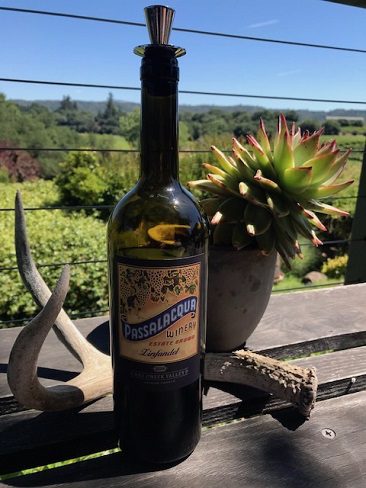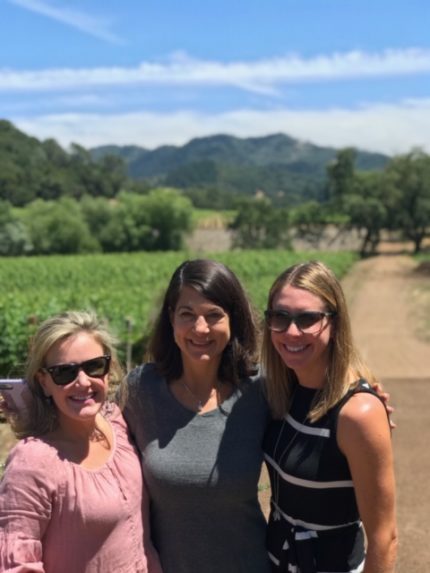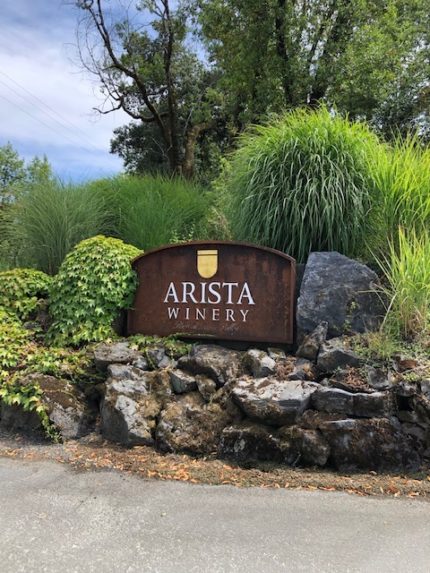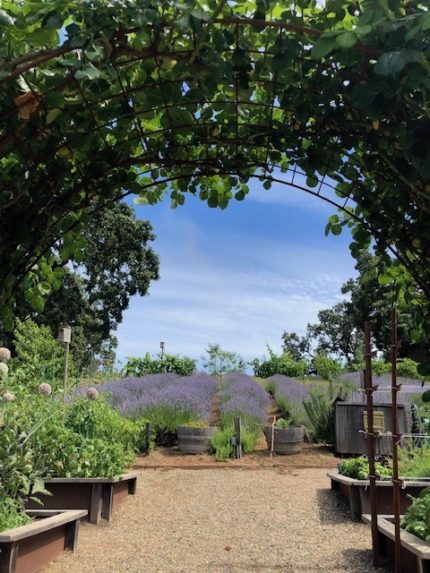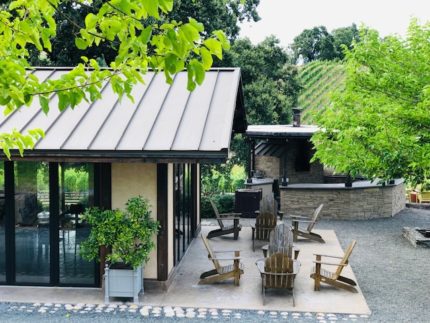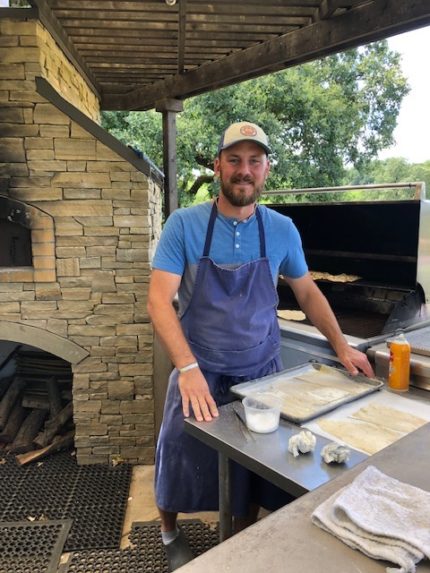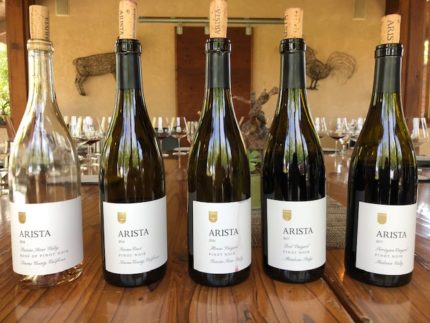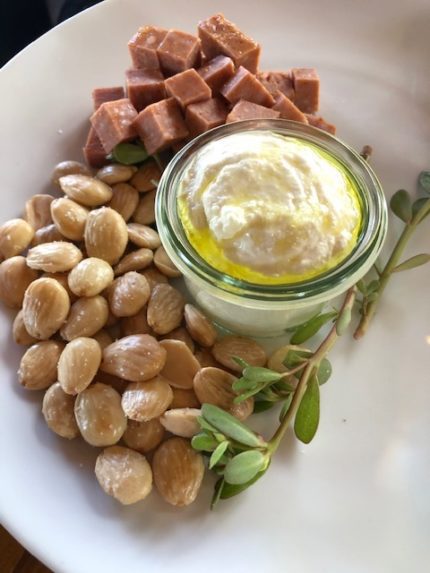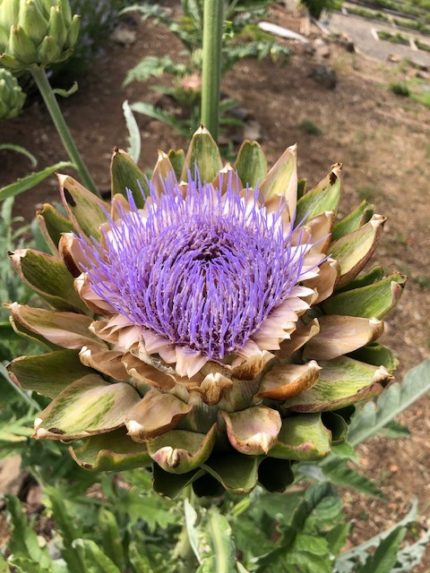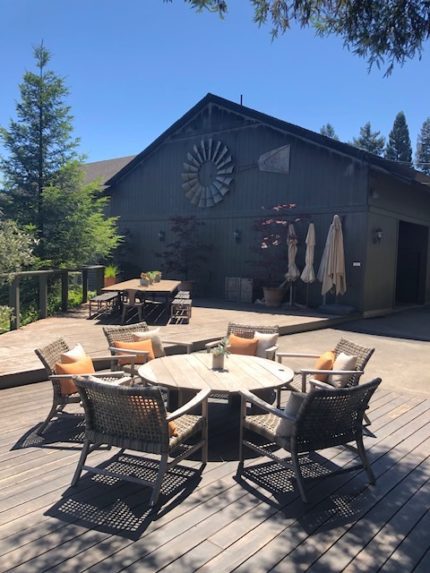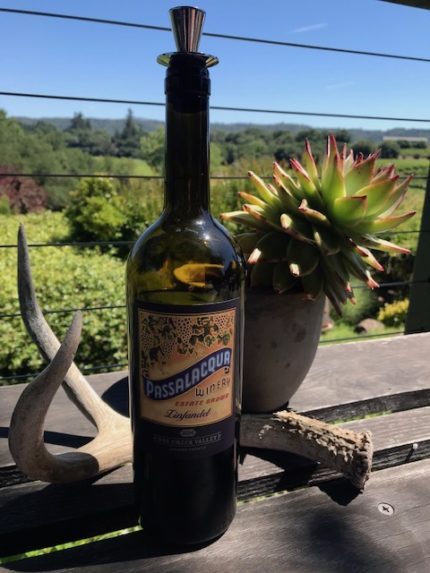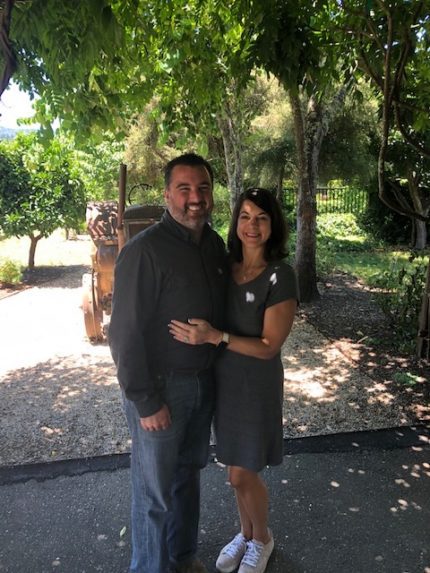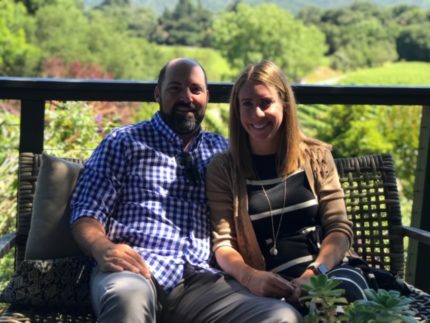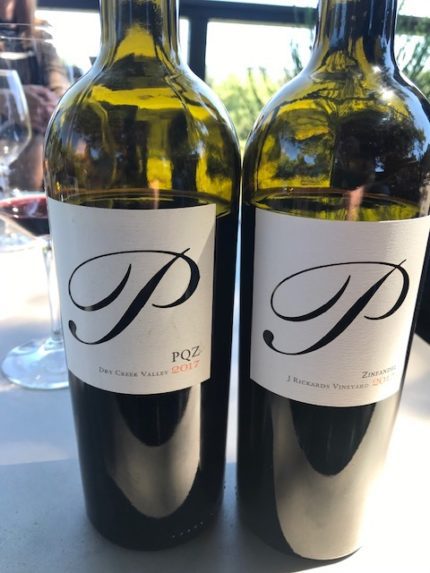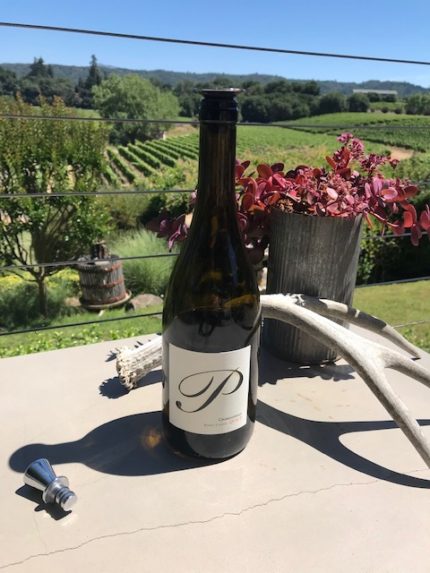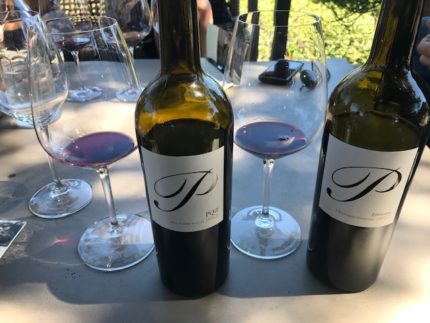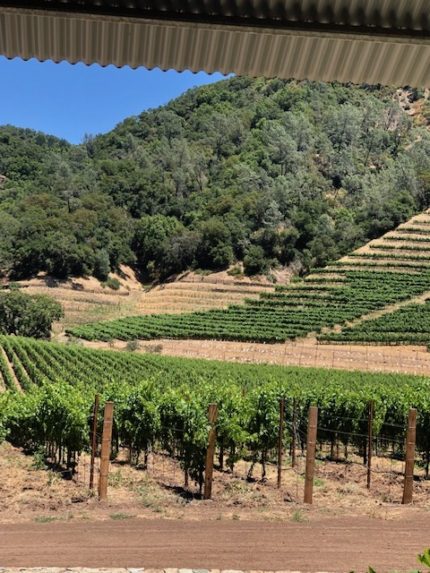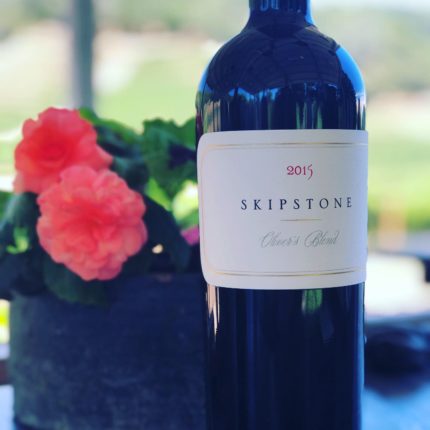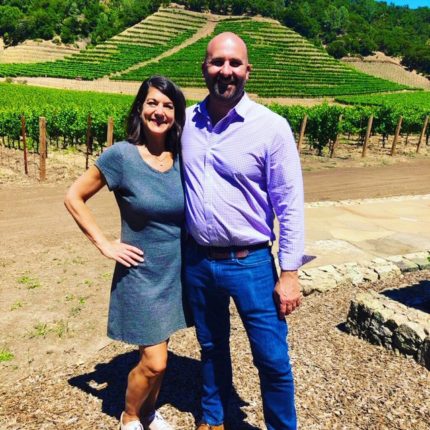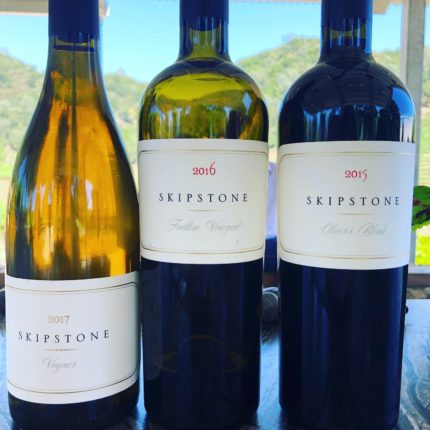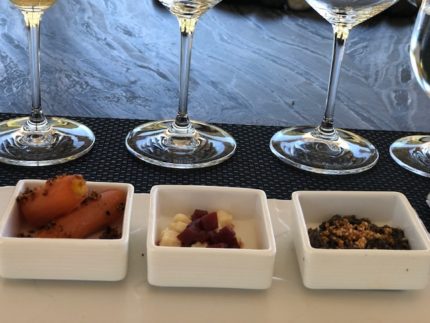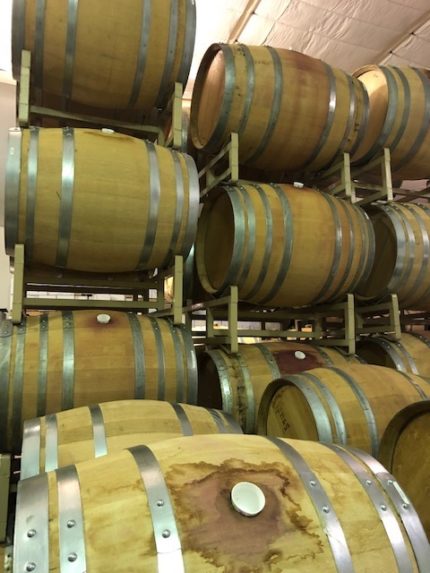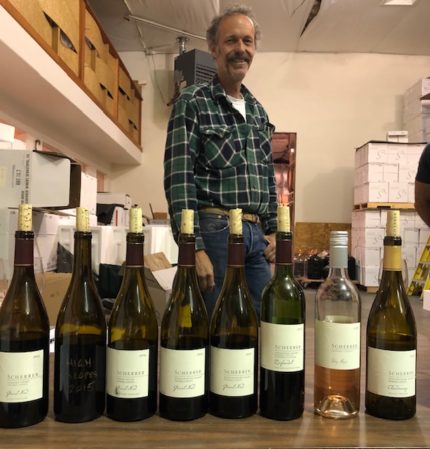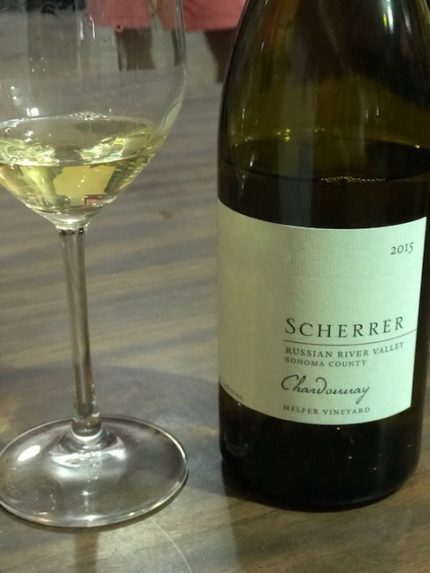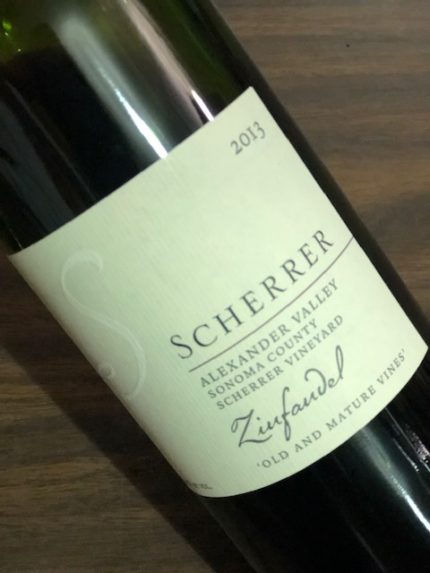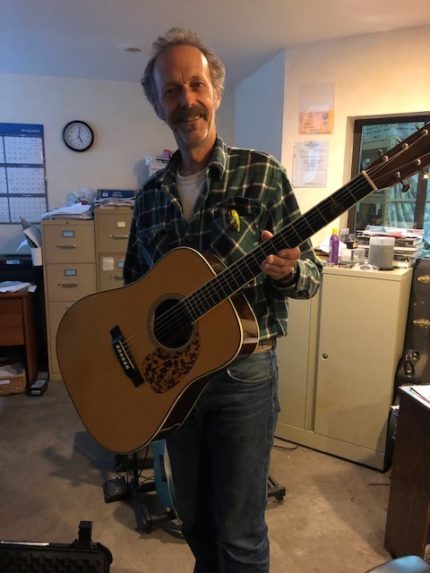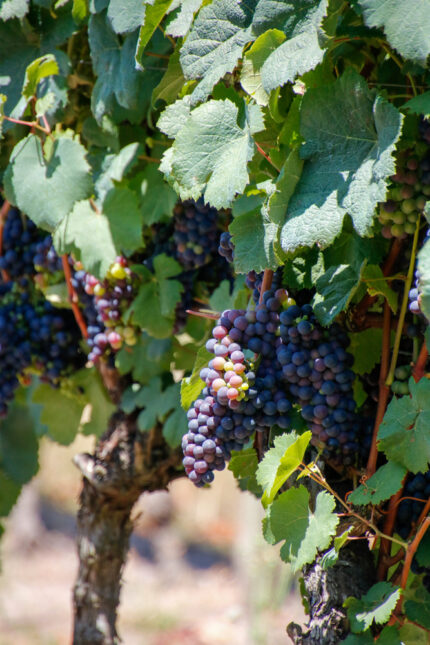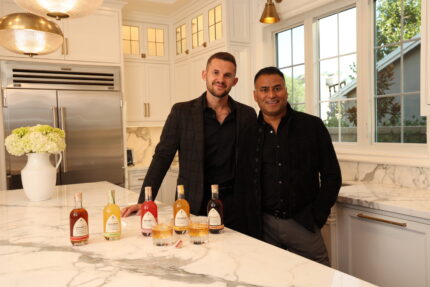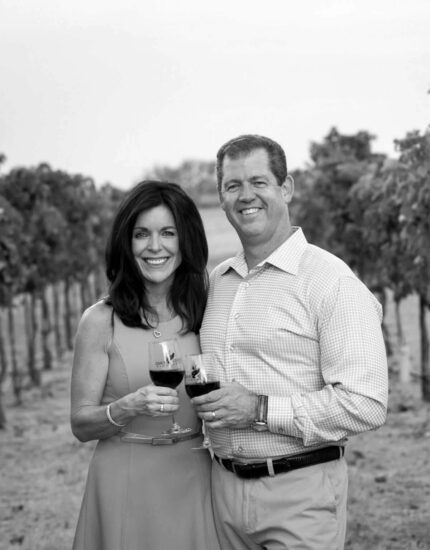Our wine trip continued in Sonoma where we spent time at four places– Arista, Passalacqua, Skipstone and Scherrer Wineries. What I loved about Sonoma was my time there showcased the diversity of this region from winemaking styles to customer experience to the philosophy in their tasting rooms.
Our first Sonoma stop was Arista Winery where we were hosted by Wine Educator and Certified Sommelier Kerry Anderson. I’ve written about Arista before, and I’ve had the chance to become friends with Mark, the winemaker, and Jennifer McWilliams, who originally come from Texas.
The McWilliams family purchased the property in 1999, initially for grape growing, and then decided to switch to winemaking in 2003. In 2012, they sold the brand to their sons, Mark, and Ben, who oversees hospitality and estate activities. The McWilliams have always believed in small lots of Pinot and Chardonnay focusing on quality with a focus on unique vineyard sites, and the sons have continued that legacy. The focus is about showcasing classic Russian River Valley profiles – which as you taste through these wines you find are diverse and reflective of the vineyards and their sense of place.
Arista Executive Chef Tim Caulkers
We arrived at the picturesque Pavilion for our Taste of Terroir and found a gorgeous line up of wines and food pairings with pepperoni, Marconi almonds, ricotta and flatbread from Arista’s Executive Chef, Tim Caulkers. We tried the delicious Arista line-up, of the following wines:
2018 Rose of Pinot Noir
2016 Sonoma Coast Pinot Noir
2016 Mononi Vineyard Pinot Noir
2017 Perli Vineyard Pinot Noir
2017 Ferrington Vineyard Pinot Noir
We then strolled through the garden eating fresh strawberries and tomatoes. It was amazing to have Chef Tim take us through his process of making the fresh flatbreads and how he prepares his dinners to match these wonderful wines.
Spectacular views, incredible people and unparalleled wines made this an experience to remember.
My next three experiences were new wineries that came from recommendations from highly trusted friends. Our first stop took us to Passalacqua Winery, which ironically was around the corner from where we were staying, and quickly became a group favorite.
The Passalacqua family came to the United States in 1865, when Francesco Passalacqua emigrated from Genoa. He settled in Healdsburg and planted grapes. In 1895, he started Fitch Mountain Cellars and today the original house and one half acre of grapes still stand on Fitch Street in downtown Healdsburg. In 1930, Francesco’s widow Rachel purchased the Oliveto Wine Company, and in 1933 her daughter Edith opened Sonoma County Cellars in the same building. Edith was one of the first women to make wine and to own and operate a winery in California after prohibition. Her original label design is used on each bottle of the winery’s Zinfandel.
Fast forward to 1979 and three generations later and Tom Passalacqua and his wife Sandi purchased a 300-acre ranch off Mill Creek Road, at the southern tip of Dry Creek Valley. They planted almost 110 acres of Cabernet Sauvignon in 1996. In 2000, their son Jason began making wine and opened the current property in 2004. Today Jessica Boone is the winemaker and the fifth generation is now involved in the business.
Chris Puppione, Director of Sales & Hospitality, and me
This family-owned winery is all about the experience. We strolled in for our tasting one beautiful sunny Sonoma day and were met by Chris Puppione, Director of Sales & Hospitality. We settled back on the patio in comfy chairs and enjoyed our wines.
Chad and Colleen Kolar living the Passalacqua mantra
Chris told us that “Passalacqua wines pair with fresh air.” As we reclined into chairs that don’t sit up straight, which is on purpose, we enjoyed great conversation. It was fun to take a pause and toast to fun and friendship.
He talked about the winery and owners’ approach to participating in every aspect of the winery, from growing the grapes, to making the wine, to sharing it with our family of customers, and how that differentiates them.
We tried a variety of wines and I emerged a new wine club member at the end. The interesting thing is that the wines were not served traditionally meaning that the whites did not go prior to the reds. It worked perfectly as a palate cleanser.
2017 Passalacqua J Rickards Zinfandel
2017 Passalacqua Pqz Zinfandel
2014 Passalacqua Estate Zinfandel
2017 Passalacqua Rued Clone Stiling Chardonnay
2016 Estate Cabernet Sauvignon
2009 Block 4 Cabernet Sauvignon
2014 Block 4 Cabernet Sauvignon
2017 Lago di Merlo Fiano
Jason’s guiding principle is “Walk Your Own Row,” which means that life is about relaxation, breathing and taking your time in life. It’s the perfect philosophy for a Sonoma day to sit, sip and savor.
Our next stop could not have been more different with an iconic winemaker who has wine on lists at some of the top restaurants all over the world. Phillipe Melka is a Bordeaux native who studied geology, agriculture, and enology and is a sought after consultant throughout the Valley. It was this special potential that originally drew him to Skipstone Wines. Philippe’s mission at Skipstone Ranch is simple: to express the beauty of the terroir through the artistry and intuition of the winemaker.
But first you have to find it. And that’s not easy.
The winery is owned by Constance and Fahri who refer to Skipstone as a “devoted partnership with the earth.” Fahri is an entrepreneur and venture capitalist and Constance has experience of marketing luxury products. The first vintage was 2005 and Melka was hired a year later.
Me and Private Client Director Jason Heintz
We were hosted by Private Client Director Jason Heintz who led our food and wine tasting. Jason’s grew up surrounded by wine. After a decade in consumer electronics and design in Silicon Valley, he returned to the region to pursue his passion as a profession. He worked at Groth and then at Ma(i)sonry Nap Valley and then consulted before joining Skipstone.
Skipstone produces between 200 and 1,500 cases a year sold mostly direct to consumer through the allocated wine club. They also have a champagne that we didn’t try, but it was super intriguing to me for the future. Approximately 26 acres are planted out of the 200 acres of the vineyard and there are 30 different blocks within this small space. The organic winery is currently in process of building its own production facility to move its production from Merryvale and has a vision of it being completely solar.
We had a seated tasted with several wines from the portfolio paired with small bites from Laura and Sayat of Istanbul Modern in San Francisco.
2017 Skipstone Viogner
2016 Skipstone Faultline Vineyard
2015 Skipstone Oliver’s Blend
2016 Skipstone Malbec
We also had a chance to taste the olive oil grown on the estate. It was an experience of food, wine, hospitality and a chance to experience an iconic winemaker’s wines in an intimate setting.
Our next stop was at Scherrer Winery, which could not have been more different. Fred was strongly recommended by a wine owner friend of mine as one of the “Sonoma pioneers and one of the biggest characters in the Valley who does things 100 percent his own way.” He was right on both counts. Scherrer doesn’t have a tasting room and does tastings as the wine production schedule allows. Even with a map and detailed instructions, we drove right past it thinking that “surely this can’t be the place.” Yes, it is.
Fred Scherrer with a fraction of the wines we tasted
Fred talked about getting in the business in the mid-70s due to his teenage interest in alcohol. His family allowed him to make beer and wine from the family vineyard and that began his love of wine. He went to UC Davis and worked several wine jobs before landing at Duxoup Wine Works and then Greenwood Ridge Vineyards. While at Greenwood, he started his own label and the winery decided to produce some of his Zinfandel for his own label. He went on to work for Dehlinger Winery in the late 1980s who helped him develop a business plan over the years until he was ready to move to his facility in 1997. He expanded from Zinfandel to Cabernet Sauvignon and Chardonnay. He took over the new building in 2004 and since then, his production has grown to a dozen wines including grenache, syrah and dry rosé and about a dozen Pinot Noirs, with a total production of 4,000 to 5,000 cases.
We were warmly greeted by Winemaker Fred Scherrer who gathered our group, and another who stopped by to pick up their wine club allotment, around a card table where he set up every wine (I think) in the portfolio (too many to list).
He talked about his philosophy of making great tasting wines that age well from pockets of different climates that have balance. He makes his decision based on weather, vines and experience.
Most of his wines are sold direct to consumers and they are value-priced and delicious. If you are lucky enough, you’ll get Fred to show you his guitars, get him to play a song or two and get him talking about his music stories.
My day in Sonoma could not have been more different with experiences, but the similarity of what I love about this region stayed true. Great wine, welcoming people, passion and a love of the land made me embrace this region as one of my favorite places and ended a wonderful birthday trip to the region.
